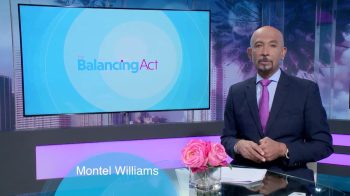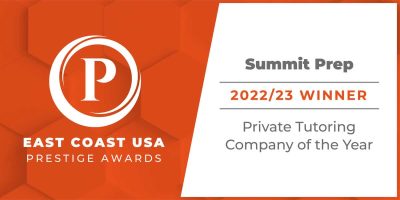
Can any of us relate to having made personal finance mistakes? I see Ronald Wayne raising his hand in the back of the class: in 1976, he sold his 10% stake (currently worth over $95 billion) in Apple for $800. Ouch. Ok, so, most of us have probably not made that big of a financial mistake, but almost all of us have probably made mistakes that have cost us at least hundreds of thousands of dollars, even if we do not realize it.

So investing favors the young. Clearly.
Ok, ok, I’ll get to the point of the seemingly “click bait” title. You can, of course, invest or save on your children’s behalf in any manner you choose. But, if they have earned income, as so many of our students working summer jobs currently do, then I would argue that the smartest way for them and you to invest on their behalf is likely in a Roth IRA. There is no tax deduction for contributions (unlike with a traditional IRA or 401k), but that is essentially inconsequential for teenagers because they are in such a low tax bracket to begin with. The benefit to a Roth IRA is that they can withdraw the investment gains tax free in retirement.

In 2020, the IRA contribution limit is $6,000. If a 16 year old is able to earn that much and deposit it in a Roth IRA (or earn that much and have their parents match that earned income with a $6,000 contribution to the teen’s IRA), then that $6,000 will likely grow to over $189,000 by the time they are 67 years old.² And, because it’s in a Roth IRA, the entirety of that $189,000 can be taken out completely free of taxes once they reach retirement.
A summer of hard-work and a few minutes to set up a Roth IRA account can earn teenagers an additional $183,000 in investment income. After the initial deposit, all they have to do is… nothing. Just let the money grow. If you and your teen(s) are not already doing so, it might be worth thinking about how to leverage time to their advantage with investing. There is no better time than now.
Post Script: Why am I writing about this? Because we aim to empower our students to succeed in life. Smart people think on the margins: how the compounding effects of incremental improvements can create massive advantages, especially over long periods of time. Investing, whether in stocks or in education, pays dividends over time. To what end? Hopefully to enable you to live a life of fulfillment that enriches the lives of those around you as well. Although both standardized tests and academic subjects teach fantastic knowledge and skills, if you’d like us to teach your teen beyond those tests and academic subjects (whether it be personal finance, Greek Literature, and/or anything in between), please let us know, and we would love to do so.
Works Cited:
- https://www.calculator.net/investment-calculator.html. I used a 7% return in my calculations, which is widely considered a reasonable (or conservative estimate) for long-term returns on investment in the S&P 500 (the average annual rate of return from that index from 1926 to January, 2020 was 10.1%) If, instead, I had used the average historical return of 10.1% in this post, then an initial $6,000 would have grown to over $810,000 after 51 years (more than 4 times as much money than with the return of 7%). So I could have potentially titled the article “How to make $810,000 this summer,” but I like to err on the side of conservative estimates. But, speaking of how seemingly small percentages can lead to astoundingly different outcomes (just an additional 3.1% in annual return led to $622,415.79 more money after 51 years), this fact is another reason to pay very close attention to the investment fees that you’re being charged. Take a look at the table to see why:
No Fee 0.03% Fee 1.00% Fee Ending balance after 51 years: $ 189,114.10 $ 186,242.25 $ 113,271.03 Total Cost of Fees: $0 $ 2,871.85 $ 75,843.07 In the table above, $6,000 becomes $189,114.10 after 51 years at a 7% return. Look at the difference in cost through fees and opportunity cost between a .03% fee (which is, for example, what Vanguard’s Total Stock Market Exchange Traded Fund charges) and a 1% fee, which is fairly typical of many actively managed funds. If the actively managed funds or your broker can’t out perform the market by at least 1% (and very few can, especially with the 51 year investing timeline that we’re using in this scenario), then you’re probably better off sticking with a well diversified, low-cost index fund or ETF. The difference (which you can check here: https://www.buyupside.com/calculators/feesdec07.htm) in ending balances becomes even more extreme with higher return rates. Consider the table below that runs the same fee calculations but with the average historical rate of return of 10.1%:
No Fee 0.03% Fee 1.00% Fee Ending balance after 51 years: $ 811,529.89 $ 799,206.15 $ 486,070.70 Total Cost of Fees: $0 $ 12,323.74 $ 325,459.19 The person getting the average market return but with a 1% annual fee will lose $313,135.45 more than the person with only a .03% annual fee. And, fees and opportunity cost will have eaten up 40% of the former investor’s total gains. Granted, an investment advisor who can beat the market (if you’re smart/lucky enough to find him or her) will again lead to much greater gains than you would otherwise get given the massive impact of a small percentage advantage over a long-period of time. And they can give very valuable advice on how much to invest, what types of accounts to use for investment (401k, 529 plans, etc), how to do long-term planning, etc. And I should stop typing now because this is turning into a separate post when it was supposed to be a simple citation…
- https://www.calculator.net/investment-calculator.html








